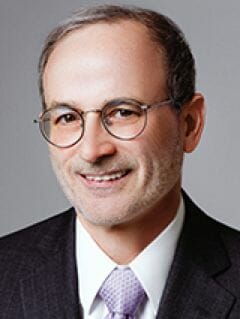November 23, 2022 - After a Covid-driven hiatus of three years, the LSTA finally returned to Tel Aviv. Elliot Ganz moderated a panel attended by 400 people on the US institutional loan market at the Tandem Capital 13th Annual Global Markets International Conference. Participating in the panel were Michael Nechamkin of Octagon, Andrew Marshak of CSAM, and Gregory Robbins of Golub. This year, given the prodigious growth of private direct lending, the panel covered both the BSL and direct lending markets.
The panel began with the basics: What are the characteristics of broadly syndicated institutional senior secured loans, what are the characteristics of private direct loans, what do they have in common and how do they differ? The panel explained how both types of loans are extended to US non-investment-grade companies, are senior and secured, and are priced at a spread over a floating rate. After discussing the differences in liquidity , ease of execution, deal size, pricing and structure, the panel addressed why borrowers and lenders each might prefer one to the other depending on market timing, return goals (direct loans typically, but not always, pay an “illiquidity premium”) and several other factors.
While noting that the private direct loan market has grown substantially over the past few years, the panel also described how the BSL market, too, has grown by 50% since 2017. They attributed the growth in both markets to the search by investors for yield in a low interest rate environment, very low default rates and relatively high recovery rates over that period, and, the relative lack of volatility of the products.
The panel then turned to current performance. While the BSL market is experiencing one of its rare negative years (annual returns down about 2.5% YTD), it has outperformed virtually every other major asset category, including the S&P 500, high yield and investment grade bonds and US Treasuries. Moreover, the panel noted that over the past twenty-five years, annual returns in the BSL market were negative only two times (and bounced back strongly each time). The panel explained that the market is adjusting, with credit spreads widening, especially for lower-rated loans, and pointed out that market liquidity continues to be very robust, with annual trading volume projected to reach record highs.
The panelists concluded with brief projections for 2023, all agreeing that defaults would rise (but not too high) and that returns would continue to widen out, perhaps to as high as 10% or more. The panel presentation is available here.






